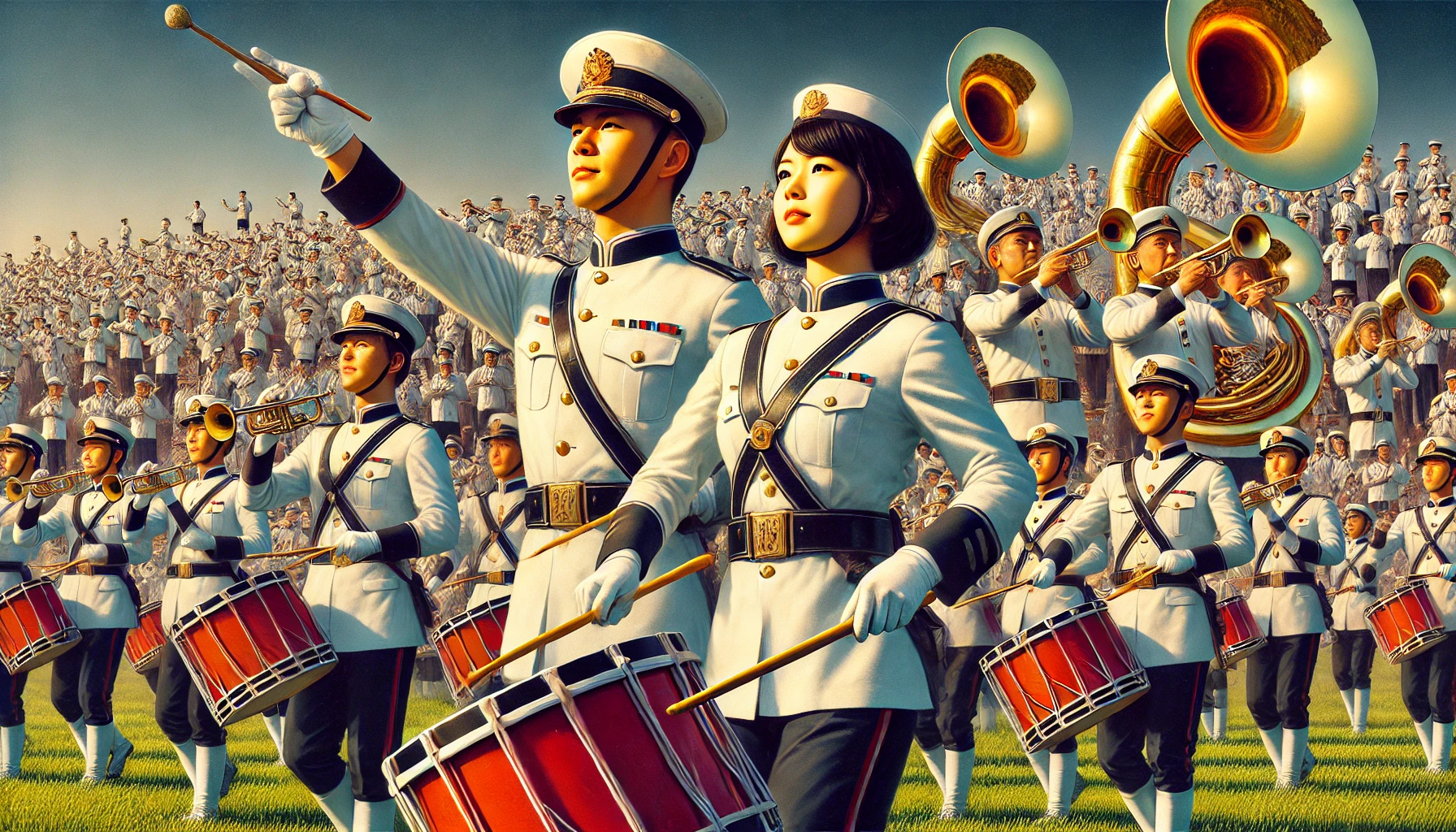Introduction: The Unique Dual Leadership Model
In the meticulously organized world of Japanese marching bands, the presence of two drum majors is a distinct feature that embodies the cultural principles of balance, harmony, and practical leadership. This dual leadership model not only reflects traditional Japanese values but also addresses practical necessities, creating a fascinating blend of cultural and functional roles within the bands.
The Role and Participation of Drum Majors
Drum majors in Japanese marching bands are more than just musical leaders; they are pivotal in managing the band’s dynamics and visual performance. The position of the drum major is highly respected, demanding not only musical skill but also leadership qualities, discipline, and the ability to synchronize a group’s efforts towards a harmonious performance.
Cultural Harmony and Balance
Japanese culture values symmetry and balance in all aspects of life, from art and architecture to social interactions and traditional ceremonies. This cultural backdrop influences various organizational structures, including marching bands. Having two drum majors allows for a visual and functional balance, ensuring that the leadership is neither too concentrated nor overly dispersed, which aligns with the aesthetic and philosophical ethos of Japanese tradition.
Practical Leadership in Action
The practical reasons for having two drum majors in Japanese marching bands are rooted in the demands of managing large groups during intricate performances. Each drum major may lead different sections of the band or focus on separate aspects of the performance, such as musical precision and march formations. This division of labor not only enhances the effectiveness of their leadership but also ensures that all members of the band are adequately supervised and directed.
Clarity in Role Division
With two leaders, the roles within the band are clearly delineated. One drum major might focus on keeping the tempo and overseeing musical execution, while the other concentrates on formation and maintaining the visual integrity of the performance. This clear division prevents overlap in responsibilities, fostering a smoother operational flow during practices and performances.
Teamwork and Collaborative Judgment
The dual drum major system underscores the importance of teamwork, not just among band members but also between the leaders themselves. This setup necessitates constant communication and mutual understanding between the two drum majors, serving as a live demonstration of effective collaboration and shared leadership. It also allows for more dynamic decision-making, as each drum major brings their perspective and expertise to the table, enriching the overall judgment and adaptability of the band.
The Tradition of Dual Leadership
This dual leadership tradition in Japanese marching bands is not merely a practical arrangement but a reflection of deeper societal values. It teaches young musicians about the importance of cooperation, respect for balanced roles, and the beauty of creating harmony within a diverse group. It also prepares them for societal roles where such values are appreciated and required.
Conclusion: A Model of Harmonious Leadership
In conclusion, the tradition of having two drum majors in Japanese marching bands is a fascinating amalgamation of cultural ethos and practical necessity. This model promotes balance, efficiency, and collaborative leadership, reflecting broader Japanese values that celebrate harmony and collective effort. As such, it not only enhances the performance of marching bands but also serves as a valuable educational tool for young musicians, teaching them principles that are applicable both on and off the field.
FAQ: Why Do Japanese Marching Bands Have Two Drum Majors?
1. Why are there two drum majors in Japanese marching bands?
Two drum majors allow for better coordination and leadership across larger bands, ensuring that all sections can see and follow the commands effectively.
2. What are the roles of the two drum majors?
The first drum major leads the band in music and marching, focusing on the overall tempo and coherence. The second assists in visual formations and maintains discipline among the members.
3. How does having two drum majors improve performances?
With dual leadership, the band can execute complex formations and musical pieces more seamlessly, enhancing both visual appeal and musical precision.
4. Is this practice unique to Japan?
While not exclusive to Japan, this practice is more prevalent there due to the influence of traditional Japanese group dynamics and the emphasis on precision and order in performances.


